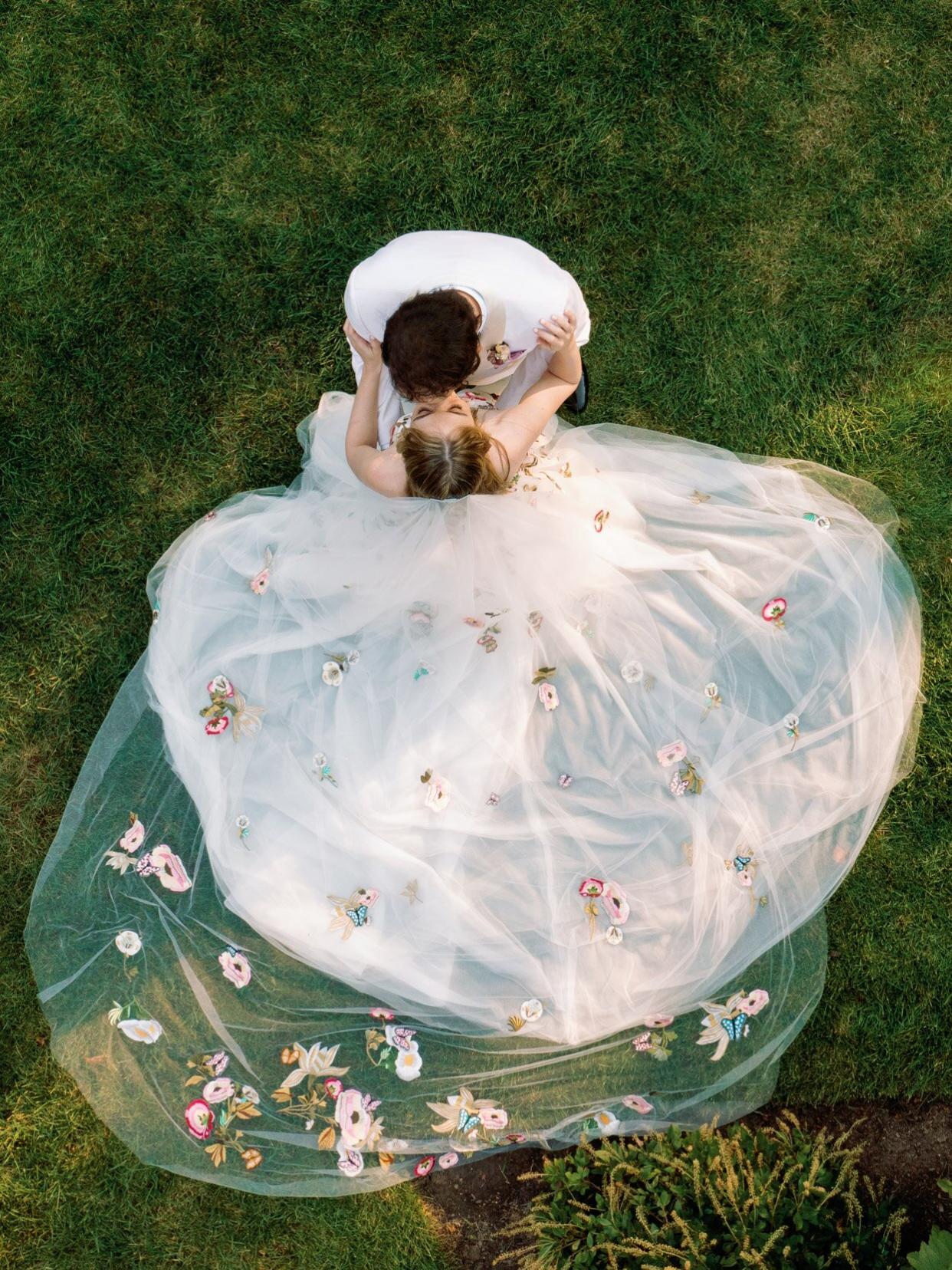A Guide to the Most Popular Wedding Veil Lengths, Fabrics, and Colors

Choosing which veil to wear on your wedding day can be an overwhelming decision due to the number of styles available. There's also the issue of whether you match the details on your wedding dress. And how do you decide how long the veil should be compared to the dress? To help speed up the decision process, we asked Brittany Finkle, CEO and Founder of Happily Ever Borrowed how to pick the perfect veil. She has rented thousands of wedding veils to brides over the years, which is why she says that picking the perfect veil can be boiled down to three main categories: length, material, and color.
Related: How to DIY Your Wedding Veil (It's Surprisingly Easy!)
Length
When it comes to the length of your bridal veil, Finkle says your veil choice can be based on personal preference. Here, Finkle describes the standard veil lengths available and the look that each length conveys.
Blusher, 30"
This is the veil that covers your face as you walk down the aisle. When flipped back, it gives a two-tiered look to your veil if paired with another veil worn in the back.
Fingertip, 38"
This is the most universally flattering veil. It flows to a natural curve in your body and won't cut the line of your dress. For those brides with dramatic back gowns, this is a popular option as the sheer illusion allows you to see it through the veil.
Waltz, 54"
The waltz is best for those brides who want a longer veil, but also want to wear their veil all night long. It does cut at mid-calf on most brides, so I'd recommend staying away from ballgown-shaped gowns here. It works best with sheath or formfitting gowns.
Chapel, 90"
Chapel is one of the most popular lengths of veil. It sweeps the floor behind you and gives an elegant look to any gown shape.
Cathedral, 108"
This is the best length for the bride who wants to make a grand entrance because of the lengthy train.
Material
Finkle says most veils are made out of tulle or lace, and different types of tulle will give you a different look.
Illusion Tulle
This is the most common tulle on the market, and it's normally made of polyester. This fabric is best suited for brides who are looking for traditional veiling.
English Tulle
This is a softer version of illusion tulle. It has a hexagon knit shape which hugs the body a little bit more than Illusion tulle.
Silk Tulle
This is the ultimate in softness. It is knitted by hand in England and drapes like a very soft silk fabric. It gives a totally different look to traditional veiling and is the most expensive tulle there is.
Alencon Lace
This French style is one of the two most popular types of lace used in veils. It has a distinct floral pattern woven into the fabric and is best identified by the flowers being outlined with corded detail. It's characterized by its 3D effect and is frequently decorated with seed pearls and sequins.
Chantilly Lace
This other popular lace is known for its flat, floral pattern and abundant detail. Brides who are looking for a soft, romantic lace pattern will love this lace.
Color
If your dress is pure white, you should stick to a pure white veil, Finkle says. Any darker and the veil color will look dingy compared to the bright white of your gown. Otherwise, any light ivorys veil will match most bridal gowns. If your dress is a true creamy ivory or champagne, then you can go for an ivory veil, she says.
The order of colors from brightest white to darkest ivory are:
Pure White
Diamond White
Silk White
Pale/Light Ivory
Ivory
Champagne
Of course, that doesn't mean you can't opt for a pop of color instead. Many brides looking for a modern look may decide to go with a blush or blue veil instead of the more traditional colors listed above.
